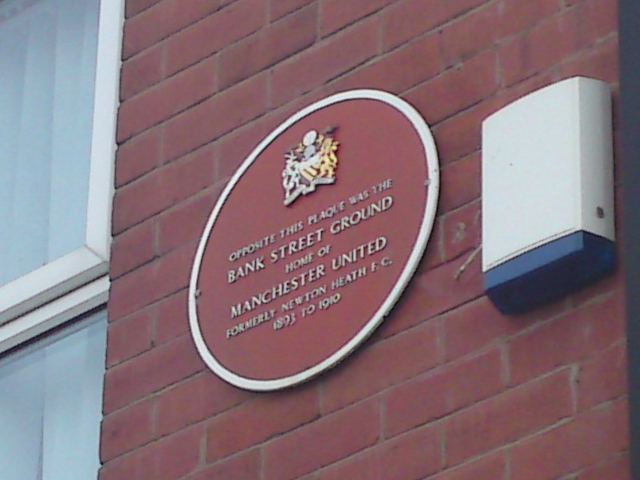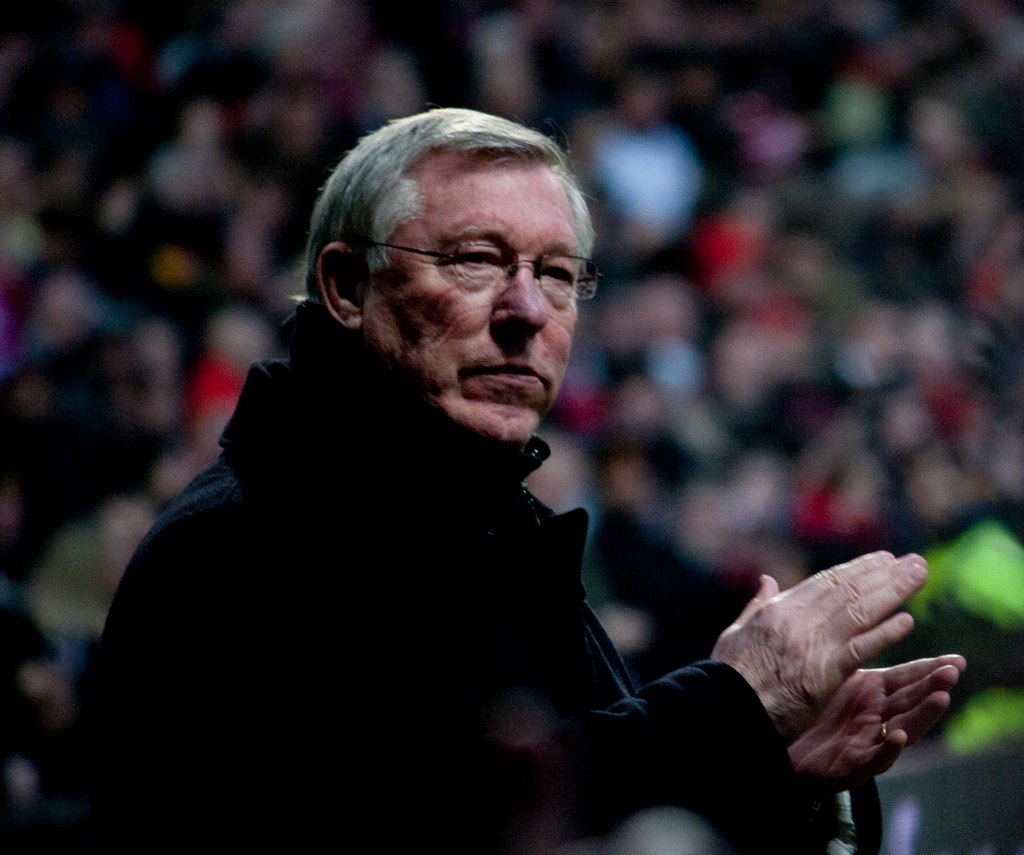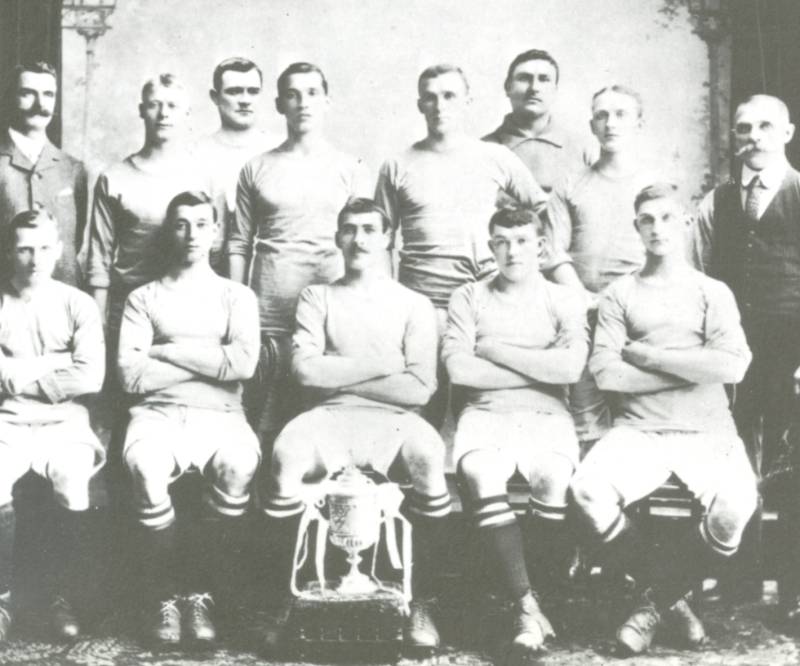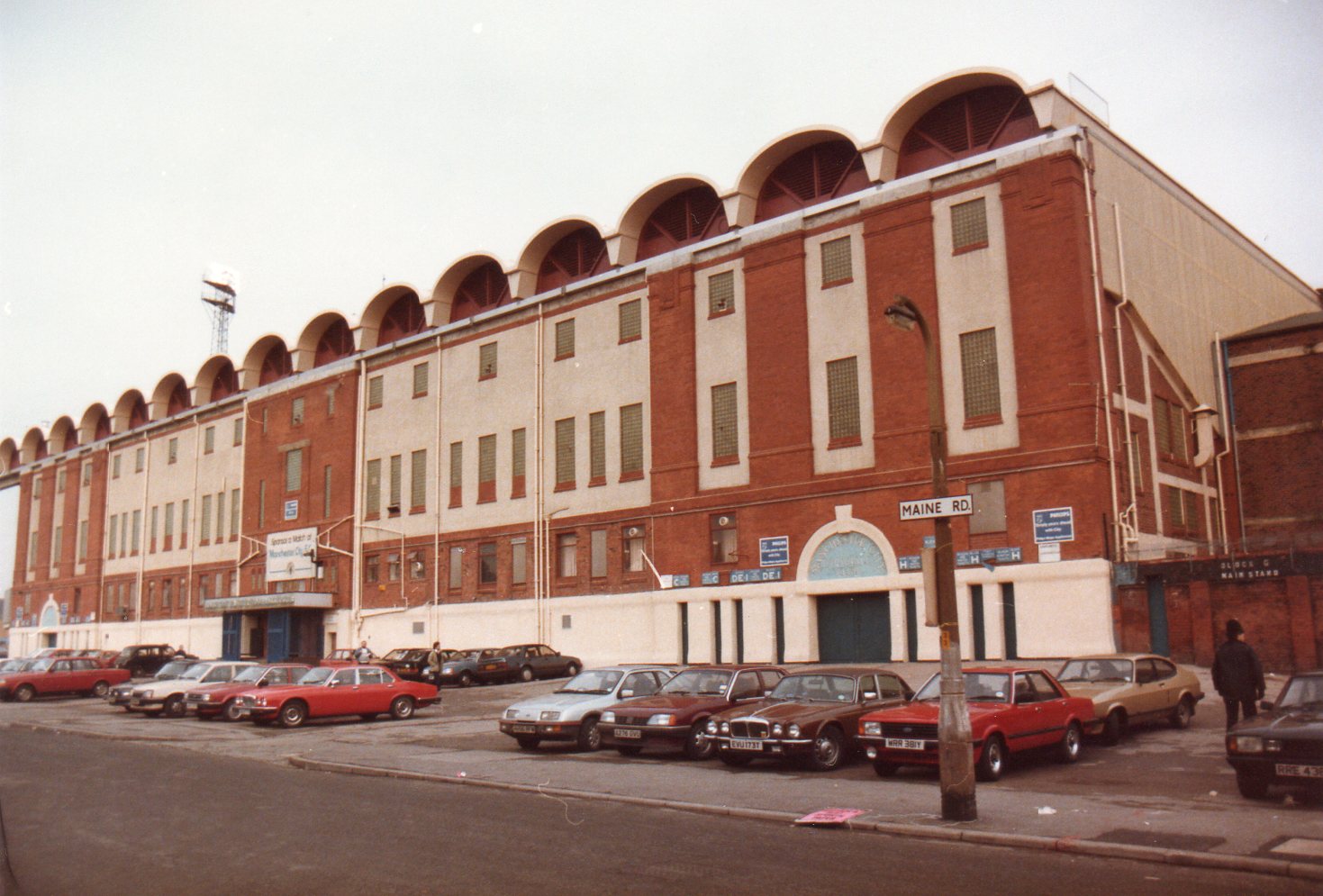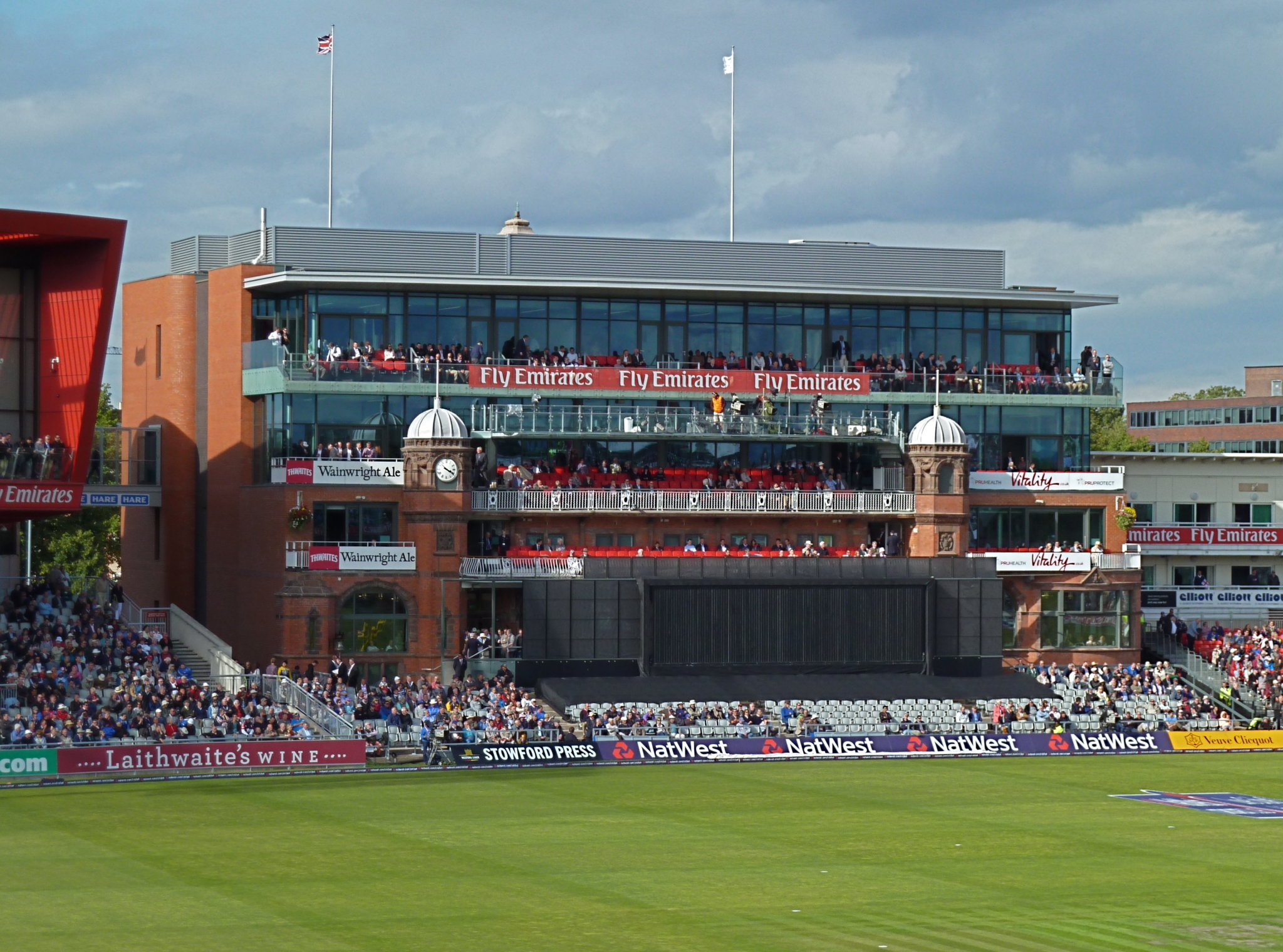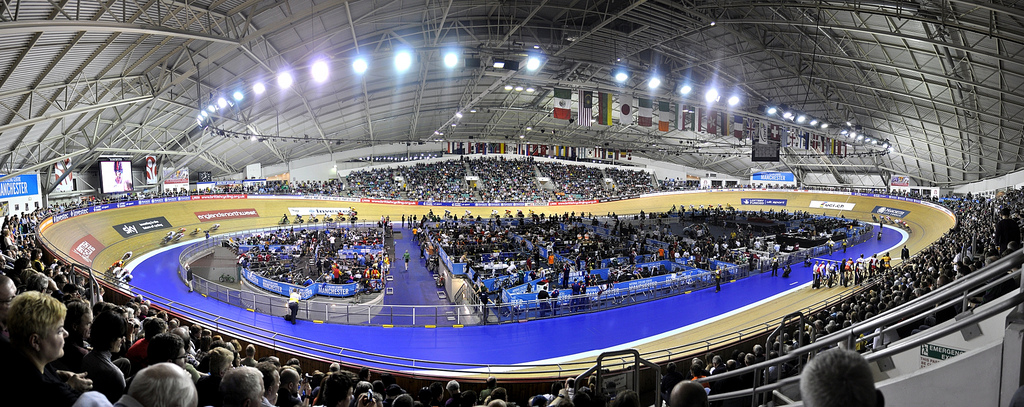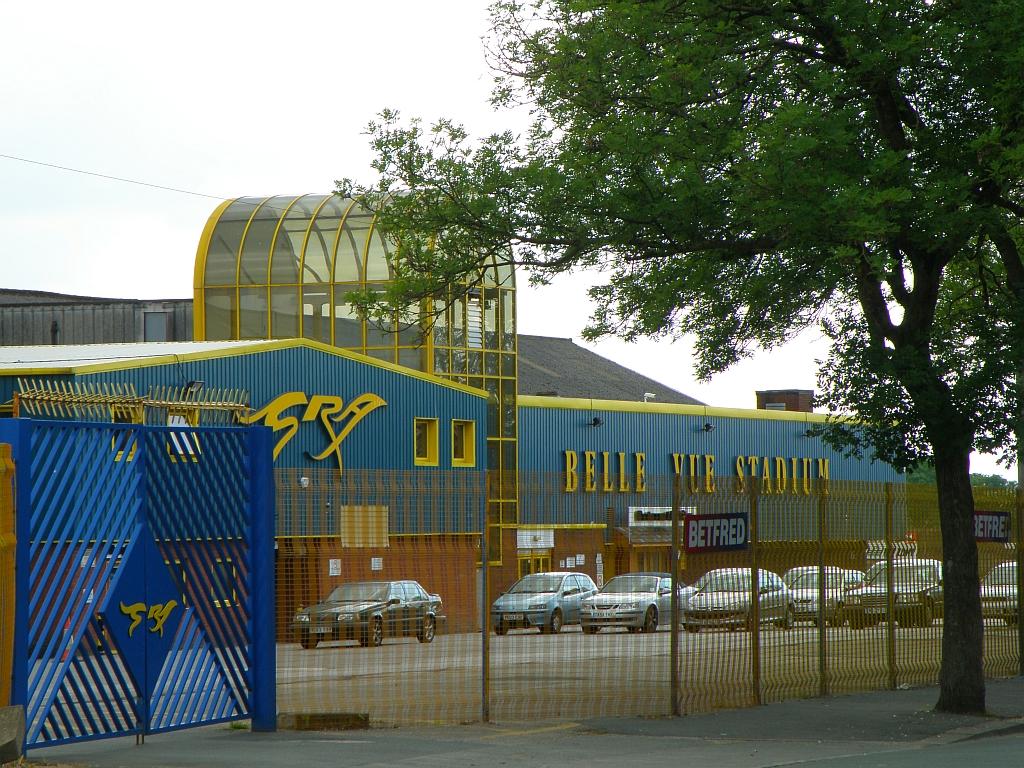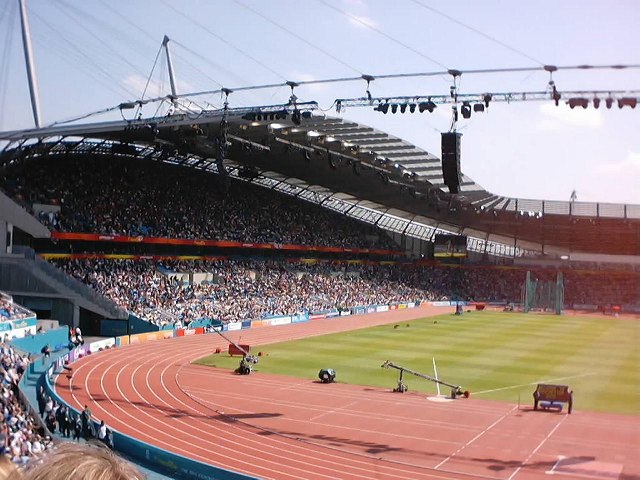Excellent experience start to finish – always very responsive to any queries and the turnaround on the property I was buying was very quick, even in the busy time leading up to stamp duty deadline. Jenny was always very helpful and went above and beyond to close on a short timescale.
Manchester is well-known for many things, with the music scene in particular being something the city has often been lauded for.
Up there with music however, is the city’s massive sporting history, with Manchester being home to two of the world’s biggest football clubs, and facilities that enable us to be the home of the British cycling team.
We’ve put together a guide to the past couple one and half centuries of sport in Manchester, covering football, cricket, rugby, cycling and more.
Football
Manchester United
Manchester United’s origin starts in 1878, when workers in the Carriage and Wagon department of the Lancashire & Yorkshire Railway Company were given permission by bosses to form a football team. Newton Heath LYR started up in the same year, playing their home games at North Road, a football and cricket ground based close to the railway yard. Their early years were spent playing friendlies against other railway worker sides, and competing in the Manchester & District Challenge Cup, reaching the final in their inaugural year of 1884, and going on to win it four times. In 1886, they first entered the FA Cup, and two years later attempted to join the newly formed Football League. They were rejected, instead going on to become a part of the The Combination, a new league competition that folded before the end of the first season, and later the Football Alliance in 1890, where the club finished in eighth place. The club continued to make applications to join the Football League, eventually entering the First Division in 1892 when the competition merged with the Alliance.
In 1893, the club had dropped LYR from its name, severing ties with the railway company that had formed it. The team were also evicted from their North Road home, choosing to move to the Bank Street Ground in Clayton. Not long after this, the club found themselves in the Second Division, struggling to get good results, and eventually falling into financial difficulty. The club narrowly survived a winding-up attempt, with investors putting £2000 into Newton Heath to save the team. In April 1902, Newton Heath underwent its biggest change yet – due to no longer being based in Newton Heath, the club’s new owners put forward alternative names including Manchester Central and Manchester Celtic, eventually settling on Manchester United.
The club’s fortunes began to improve, with them winning their first league championship in 1908, and also receiving the FA Cup. The next few years saw another league win, and victories in the Charity Shield. In 1910, a loan of £60,000 from club president John Henry Davies enabled Manchester United to move to the newly constructed Old Trafford stadium.
Throughout the next few decades, United’s performances worsened, with relegations and a dry-spell of trophies leading up to the Second World War. During this time, Old Trafford was used as a military depot, and air raids meant that in 1941, the majority of the stadium was destroyed. Football fixtures were mostly put on hold during this period anyway, and Manchester United were given money by the War Damage Commission to rebuild their home. This work began in 1945, at the end of the war, and when football resumed Manchester United were allowed to play their home matches at Manchester City’s Maine Road.
Throughout the late 1940s and the 1950s, Manchester United were managed by Matt Busby, who set about delivering success to the club once again. The “Busby Babes” was a group of young players who went on to win the league in 1956, going on to defend this successfully the following season. During a run of great success, the Busby Babes were hit by major tragedy however.
On 5th February 1958, the United team played Red Star Belgrade in the European Cup, and the following day flew back to the UK. However, a failed take-off attempt in Munich, after the plane stopped to refuel, led the aircraft leaving the runway and crashing into a house, also hitting a fuel tank and exploding. Seven United players were killed, including club captain Roger Byrne, with fatalities also including club secretary Walter Crickmer, and coaches Bert Whalley and Tom Curry. Others including Matt Busby were also critically injured, while 23 people made up the official death-toll, including eight sportswriters and members of the crew.
The tragedy left the club having to rebuild their squad, and although the following years saw an understandable decline, Matt Busby soon brought success back to the side, now informally known as the Red Devils. During the 60s, they won the league twice, the FA Cup once, and in 1968 won their first ever European title, beating Benfica 4-1 at Wembley. At the end of the decade, Matt Busby announced he’d step down as the team’s manager, handing over the reigns to Wilf McGuinness.
The early 70s saw a decline following the departure of Busby – during McGuinness’s second season in charge, Busby returned temporarily to stop the team from getting relegated, with Wilf being demoted back to his old reserve team roll. Frank O’Farrell was the club’s next manager, lasting one and a half seasons and being replaced by Tommy Docherty. Although his changes looked promising, the team eventually fell down into the Second Division in 1974. They only remained there for one year, bouncing straight back up to the top tier of football not long after.
A controversial affair lead to the dismissal of Docherty in 1975, with him being replaced by Dave Sexton until 1981, and then Ron Atkinson. Atkinson’s time in charge saw two FA Cup wins and a Charity Shield victory, but with a difficult start to the 1986 season, he was fired.
The club’s next manager was Alex Ferguson, joining the Reds from Aberdeen and finishing the season in 11th place. The following seasons continued to see poor finishes in the league by Ferguson’s United side, with the board considering sacking him – his job was saved after an FA Cup win in 1990, and from there, things looked to be on the turn for the better. After the club’s next trophy, the European Cup Winners’ Cup in 1991, the club went on to have a hugely successful period in the 1990s, winning the Premier League five times, the FA Cup three times, five Community Shields, one League Cup, the Champions League once, and also the European Super Cup.
With players including Paul Scholes, Gary Neville, David Beckham, Ryan Giggs and Nicky Butt, this massive run of success continued into the 21st century, with the 2000s seeing a further six Premier League titles, an FA Cup win, two League Cups, three Community Shields, another Champions League victory, and the FIFA Club World Cup.
Sir Alex Ferguson remained at Manchester United until 2013, finishing on a high with his 13th league title before retiring from football, and moving into a director position. He helped to choose his replacement, opting for the then-Everton manager David Moyes, who joined the club on a six year deal. The following season was a huge disappointment following the recent title win, resulting in Moyes’s sacking just ten months into his tenure, to be replaced temporarily by Ryan Giggs, who ended the season retiring as a player. He became the new assistant manager the following season, alongside new appointment Louis van Gaal.
United improved slightly, finishing fourth after van Gaal’s first season, although the side dropping to fifth the following season led to the Dutchman’s sacking, despite his last game being a victory in the 2016 FA Cup final. Multiple title winning coach Jose Mourinho was appointed in his place, again turning things around for United, winning the Community Shield, League Cup and Europa League during his first season in charge. Progress in the league wasn’t made though, with a sixth place finish leaving some disappointment for fans. This was rectified the following year, as United made their biggest finish since the departure of Ferguson, coming second behind local rivals Manchester City with a 19 point gap. This progress was reversed the next year though, with Mourinho getting sacked in December 2018, and replaced by caretaker Ole Gunnar Solskjaer, a club legend who played under Ferguson. Early progress saw him given a three year contract, that will see him remain at the club until 2022.
Manchester City
While Manchester United’s origins started at a railway company in 1878, Manchester City’s begins at the St. Mark’s Church of England in West Gorton, in the year 1880. Church wardens wanted to create activities for local men in an attempt to combat gang activity during a period of high unemployment, and although a cricket club was formed, there was still nothing for the winter period. As such, St Mark’s (West Gorton) was formed, playing their first match against a church team from Macclesfield in November 1880. Early days saw games in competitions such as the FA Cup and the Manchester Senior Cup, while the team slowly dropped the church roots from its name, becoming known as Gorton AFC.
During these early years, the Gorton side moved between five different grounds, including Kirkmanshulme Cricket Club, Pink Bank Lane, and the Bull’s Head Hotel. In 1887, they once again lost their home, and found a new appropriate location in Ardwick. This change in location meant the club need a change in name, becoming Ardwick AFC, and playing at the new Hyde Road ground. A few years later, Ardwick made their first big achievement, as they beat Newton Heath to win their first Manchester Cup in 1891, something they retained the following year. Also in 1891, the club joined their first league competition, becoming part of the Football Alliance, which one year later merged with the Football League – Ardwick became founding members of Division Two at this point.
In 1893, the club was struck by financial issues, the result of which was a restructure, and the club becoming a registered company in April 1894. This also led to yet another name change, as Ardwick became Manchester City FC. A few years later, and the newly named club were playing in the top tier of English football, gaining promotion in 1899.
The club’s next big piece of success came in 1904, when not only did they finish second in the league (their highest position yet), but they also won the FA Cup. This however was the last of the club’s achievements for the next couple of decades, with the team rocked by corruption allegations and receiving fines and sanctions in the early 20th century.
Now playing at their sixth ground, Hyde Road become the first football stadium outside of London to be visited by a reigning monarch, as King George V watched Manchester City vs Liverpool. However, not long after this, the Hyde Road days were over, thanks to a cigarette end causing a fire that destroyed the main stand. Although it was initially repaired, in 1923, the club’s ongoing search for a new home was concluded, as they moved to the new 80,000 capacity Maine Road in Moss Side. The early days at Maine Road were successful, with an FA Cup win in 1934, and a league win in 1937.
In a surprise turn of events though, the following season after winning their first league title, Manchester City were relegated into the Second Division, where they remained for several years thanks to the football hiatus of the Second World War.
Following the war, former cup winning captain Sam Cowan returned to the club as the new manager, balancing business interests in Brighton with his new club role, and in his first season won the Division Two title, regaining the club top tier status. This was to be his only season however, as due to his business, he had to resign.
In 1949, the club were in need of a new goalkeeper, following the retirement of the highly lauded Frank Swift, who’d been with City since 1933. The choice of replacement was a controversial one, as former Nazi paratrooper Bert Trautmann joined the side, only four years since the war. Despite initial clashes regarding the signing, including a demonstration at which more than 20,000 people attended, attitudes quickly changed, thanks primarily to his top-class performances. Most notably, in 1956, Trautmann broke his neck during the FA Cup final and remained on the pitch for the final 15 minutes, gaining him lifetime legend status, with a film “The Keeper” being released in 2019.
In the 1950s, the club struggled with inconsistent form, bouncing between the two halves of the league table, and having their only successes in the FA Cup – finishing second in 1955, and winning the trophy in 1956.
In 1963, the club suffered relegation again, and in the following season finished at their lowest point ever – eleventh in the Second Division. At this point, the club were managerless and suffering from poor fortunes, and in the close season of 1964, club chairman Albert Alexander took action. He overhauled the club, hiring new manager Joe Mercer, who selected Malcolm Allison as his assistant. Mercer’s first season saw City win the Division Two championship, and although the following season was uneventful, the next one saw Manchester City rise again, finishing top of the Division One table, with players such as Mike Summerbee, Francis Lee and Colin Bell playing alongside captain Tony Book.
City’s success under Mercer continued into the following season, when the side lifted the FA Cup for the first time in 13 years, and in 1970, winning the League Cup and the European Cup Winners’ Cup. Over the next couple of seasons, the successful partnership of Mercer and Allison began to crack, and in 1972, Joe Mercer quit the club. Malcolm Allison took over as manager, winning the FA Charity Shield, but leaving halfway through his first season as the club narrowly avoided relegation.
After more managerial changes, former captain Tony Book stepped up to the role in 1994, helping to stabilise the club’s form, with a League Cup win and 2nd place position in the league occurring during his tenure.
The 1980s and 90s were turbulent times for the club, with a large number of managerial changes during the decades, with the club dropping down to Division 2 twice in the 80s. In 1992, they were founding members of the Premier League, but after four seasons, found themselves in Division 1. In 1998, Manchester City hit a whole new low, as they dropped into Division 2, the third tier of English football for the first time ever.
Under the management of Joe Royle however, things turned around quickly with back-to-back promotions seeing Manchester City return to the Premier League in 2000. Sadly, this was short-lived, and the club were relegated once again. This time, it was the work of Kevin Keegan that saw a Division 1 title win, getting the club back to the top tier where they’ve remained since.
The rest of the 2000s were mostly uneventful, as managers Stuart Pearce, Sven-Goran Eriksson and Mark Hughes delivered mid-table finishes. This was all to change quickly though, as on transfer deadline day in August 2008, the club was bought by the Abu Dhabi United Group, who made an instant headline signing of Robinho from Real Madrid, for a record £32.5 million. Over the next couple of years, Manchester City underwent many changes thanks to heavy investment, replacing Hughes with Italian Roberto Mancini, and signing players such as Yaya Toure, David Silva, Carlos Tevez and Joleon Lescott.
In 2011, Manchester City won their first major trophy for 35 years, beating Stoke 1-0 in the FA Cup final. Investment continued in the summer, with signings Samir Nasri and Sergio Aguero joining the club, amongst others, as Mancini set about to get the club their first ever Premier League title. The season that followed was a hugely successful one for Manchester City, with victories including a 6-1 derby day defeat of Manchester United. Despite this, a drop in form in the final weeks of the season left it looking like their local rivals would receive the trophy. However, in the last minutes of the season, a dramatic game-changing goal from Sergio Aguero snatched the title from United with seconds to spare.
The next season was less successful however, with City finishing second in the league, and losing to relegation-set Wigan Athletic in the FA Cup Final. Exactly a year to the day of the historic league win, Roberto Mancini was sacked from the club, replaced by Chilean Manuel Pellegrini in the following year.
Pellegrini set about winning the club’s second Premier League title in his first season in charge, also winning the League Cup. His next season was less successful, and with another poor finish looking likely in his third, it was announced midway through that it would be his last. Pellegrini stayed in the job to see out the season though, with a second win of the League Cup being his final honour with the blues, who he also managed to get to the semi-finals of the Champions League.
Pellegrini was replaced by Pep Guardiola, a former coach at Barcelona and Bayern Munich who was considered among the best in the world. Despite much promise, and signings including Leroy Sane, John Stones and Gabriel Jesus, his first season was an unsuccessful one, with City finishing third and winning no trophies. More investment was made ahead of the following season, replacing much-aged defensive players with Kyle Walker, Benjamin Mendy and Danilo, as well as signing new goalkeeper Ederson.
What followed was a record-breaking run for Manchester City, who finished the season with 100 Premier League points, the biggest gap ahead of second, the most wins in a season, and the most consecutive victories – 18. The run of success continued into the following season, as Pep’s City side defended their title for the first time ever, winning a domestic quadruple of the Premier League, FA Cup, League Cup and Community Shield.
Women’s Football
Although women’s football started to form in the UK in the 1960s, with the establishment of the Women’s Football Association in 1969, it wasn’t until 1988 that either of Manchester’s main clubs made strides in the area.
In November 1988, Manchester City Ladies FC was formed by a community officer at the main club, but investment was low, with the team relying on the fortunes of the men’s team to fund them. The team played at Platt Lane, one of City’s training bases, and poor conditions meant regular fixture postponements.
Over the following years, there were discussions regarding the merging of City Ladies with Stockport County Ladies, but nothing came of it. It wasn’t until 2014, when the investment the men’s team had received from the club’s new owners was replicated at the female side. Manchester City Ladies was rebranded Manchester City Women, while new manager Nick Cushing was appointed alongside new signings Karen Bardsley, Jill Scott and Steph Houghton, in anticipation of the club’s first season as part of the Women’s Super League. In 2015, City came second in the competition, going on to win it the following year. They’ve also since won the FA Women’s Cup twice, and the Continental Cup three times.
On the other side of Manchester, it wasn’t until 2001 that Manchester United had an official women’s side. In the late 1970s, an unofficial team played under the name Manchester United Supporters Club Ladies, and in 2001, they formed an official partnership with Manchester United, becoming the club’s first proper female side. However, this didn’t last long, and in 2005 the team was disbanded with the club’s new owners stating it was an unprofitable part of the business.
13 years later, and Manchester United finally announced they would reinstate a womens team, appointing recently retired England player Casey Stone as their first manager. Not long after this, the club’s first squad was compiled, featuring England goalkeeper Siobhan Chamberlain, former Manchester City player and Scotland striker Jane Ross, and inaugural captain Alex Greenwood, who was replaced by Katie Zelem after the first season.
In their first season, Manchester United joined the newly formed FA Women’s Championship, finishing the year as champions with a 9 point lead over Tottenham, gaining promotion to to WSL. They play their home games at Leigh Sports Village, while awaiting renovation work at United’s former training ground The Cliff, which will become their permanent home.
Major Matches in Manchester
As well as the games of our two Premier League sides, Manchester has hosted a number of matches in major football tournaments. Over the years, many England national team games have been played in Manchester, across Old Trafford, Maine Road and the Etihad Stadium, including World Cup qualifiers and friendlies. The first time England played played in Manchester was in February 1885, beating Ireland 4-0 in the now defunct British Home Championship tournament at the long-gone Manchester Football Ground in Whalley Range.
When both major international football tournaments, the FIFA World Cup and the UEFA Euro were hosted in England, Manchester was included in the fixture lists. During England’s triumphant 1966 World Cup victory, Old Trafford hosted three group stage games, welcoming players from Hungary, Portugal and Bulgaria.
30 years later, football fever hit the country during the UEFA Euros, with Baddiel, Skinner and the Lightning Seeds at the top of the charts with “Three Lions”. Old Trafford was the home of three group stage games, a quarter final between Germany and Croatia, and a semi-final between eventual runners-up Czech Republic and France.
Other international games to take place in Manchester include the 2003 Champions League final, with Carola Ancelotti’s Milan side, featuring players including Andrea Pirlo and Paolo Maldini, beat Juventus on penalties. In 2008, the City of Manchester stadium was the location of the UEFA Cup (now the Europa League) final, with Zenit Saint Petersburg beating Rangers 2-0.
The finals of domestic tournaments have also been located in Manchester on numerous occasions, with the FA Cup final first coming to the city in 1893 when Wolverhampton Wanderers beat Everton at Fallowfield Stadium, demolished in 1994. Three League Cup finals have also taken place at Old Trafford and Maine Road, while there’s also been 11 Community Shield fixtures in the city.
Manchester: The home of football?
As well as having two of the biggest teams in English football, Manchester is also the location of the UK’s National Football Museum, based in the former Urbis building after moving from Preston in 2012.
This is just one small factor that potentially puts Manchester to the forefront of being a potential home for football, but one major piece of history could very much cement it.
In the late 19th century, professional players started to join the game, with clubs becoming more structured. However, they played through ad-hoc fixture lists, with clubs organising their own games, with the exception of the FA Cup which had been in action since 1871. To combat this, and create a more reliable platform for clubs, discussions started in 1888 to create a league competition.
On 23rd March 1888, a meeting took place at Anderton’s Hotel in London to discuss this, but it wasn’t until a meeting on 17th April that what is now the Football League was formally created and named. The location of this all-important meeting? The Royal Hotel in Manchester, making our city the true birthplace of the football league. The Royal Hotel was demolished in 1908, but stood on the corner of Market Street and Mosley Street, a place where you’ll now find a red plaque commemorating the founding of the league.
Cricket
Although football is the sport most commonly associated with Manchester, cricket comes very close to taking its crown.
Manchester’s cricket history dates back to the late 18th century, when cricket was first played in the county of Lancashire. Manchester Cricket Club was then founded in 1816, playing its games initially on land near the Manchester Botanical Garden, now the White City Retail Park near the Trafford Centre.
In 1857, the club moved to a new cricket ground, that eventually became what is now known as Old Trafford Cricket Ground. Several years later in 1864, meetings were held between local clubs, to discuss the formation of a club to represent the county of Lancashire. As such, Lancashire County Cricket Club was founded, with the purpose of spreading “knowledge and appreciation” of cricket throughout Lancashire.
Since then, Lancashire has gone on to win nine championship titles, the most recent in 2011, and holds records for winning the most Pro40, FP Trophy, and B&H Cup titles.
Meanwhile, Old Trafford has gone on to host a large number of important matches for both Lancashire and England, and is one of the five British grounds used to host The Ashes. It’s also hosted matches during World Cups, most recently being the venue for six matches during the 2019 tournament that was eventually won by England.
Cycling
Manchester is the country’s official home of cycling, thanks to being the location of the UK’s National Cycling Centre. This is where you’ll find the famous Manchester Velodrome, an Olympic-standard cycle track that has been used to host a number of events, including races at the 2002 Commonwealth Games.
It’s also the home of the annual British National Track Championships, and in 2013 hosted the GB series of the UCI Track Cycling World Cup, as well as regularly hosting the Revolution cycling series.
Manchester’s cycling centre remains the home of the British Cycling team, with more recently built facilities at the site including a new National BMX Arena, which has hosted the UCI BMX Supercross World Cup.
Rugby
Rugby League
Although Manchester has a good Rugby League history, there’s currently no club representing the city at the sport’s higher levels.
In 1877, the Rugby club Broughton Rangers was founded, playing home games at Wheater’s Field in the Broughton suburb of Salford. In 1895, they were one of 21 clubs that formed the Northern Rugby Football Union, finishing the inaugural season as champions. They also won the Challenge Cup in 1902 and 1911.
In 1913, Broughton left their first ground, moving instead to The Cliff, a site that eventually became the training ground of Manchester United FC. They remained here for 20 years, before moving to the Belle Vue Stadium in 1933, playing inside the speedway track. Of course, this change of location was a major one, meaning Broughton no longer played in their namesake area. However, it wasn’t until 1946 that a name change was made, with the team playing under the name Belle Vue Rangers. There was little success though, and in 1955, the club folded. An attempt was made by a local businessman to bring the club back in 2005, although this failed.
A new club, Manchester Rangers was formed in 2015, but after several years of pursuing a professional license, disbanded in January 2019. Another club, Mancunians, is based near Withington, and competes in the North West Men’s League.
Canadian club Toronto Wolfpack, who play in the Super League, have formed a partnership with Manchester, setting up their UK base at Manchester Metropolitan University.
Rugby Union
Manchester is home to one of the world’s oldest rugby union clubs, with Manchester Rugby Club being officially founded in 1860. From 1919, the club played at Moor Lane, now best known as the ground of Salford City FC – however, they now play at Grove Park in Cheadle Hulme. Past achievements include being the first association football team to be recognised in Manchester, even playing in the FA Cup.
Broughton Park Rugby Union FC is another club with a large history, forming in 1882 and now playing at Hough End in Chorlton.
Major Sporting Events
The most major sporting event of them all is the Olympics, and in the year 1990, Manchester was taking part in the process of bidding to become the home of the tournament’s first UK edition since 1948. Sadly, Manchester ended up finishing fifth in the race to host the 1996 games, behind Melbourne, Toronto, Athens and eventual winners Atlanta.
Three years later, and they were again in the bidding race to host the 2000 games, this time finishing third to runners-up Beijing and hosts Sydney. However, parts of their 2000 Olympics bid, including the construction of the City of Manchester Stadium, were brought back to life when Manchester was awarded the 2002 Commonwealth Games.
On 25th July 2002, The Queen declared the games open during an opening ceremony that featured the Grenadier Guards, Russell Watson, the Red Arrows and more, as well as appearances from sports legends such as Sir Steve Redgrave and David Beckham.
Nearly 4,000 athletes from 72 countries participated in the games, including Chris Hoy, Beth Tweddle, and Paula Radcliffe, with the sports ranging from athletics and swimming, to boxing and weightlifting.
Although Manchester missed out on the Olympics, the city was still a part of the tournament during London 2012. The events were spread out primarily across London’s districts, although some sports took place elsewhere in the country. Olympic Football was one of these, with six stadiums in London, Cardiff, Newcastle, Glasgow, Coventry and Manchester used for the fixtures. Old Trafford was the venue of a number of games, the biggest of which was the semi final between South Korea and Brazil, featuring well-known players such as Thiago Silva, Oscar and Neymar.


